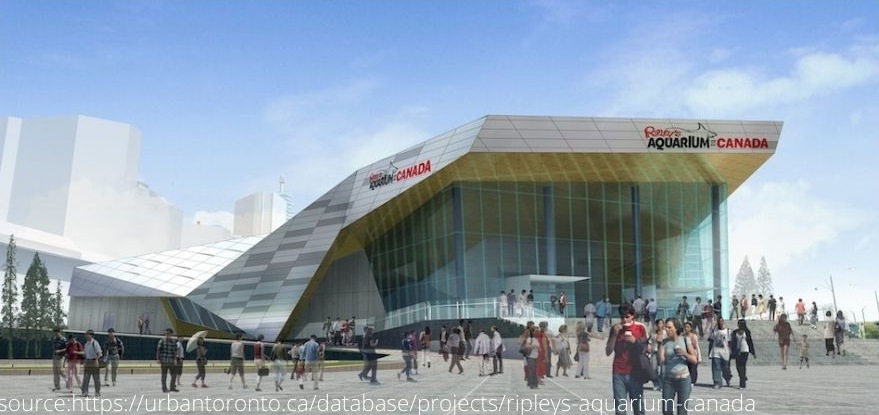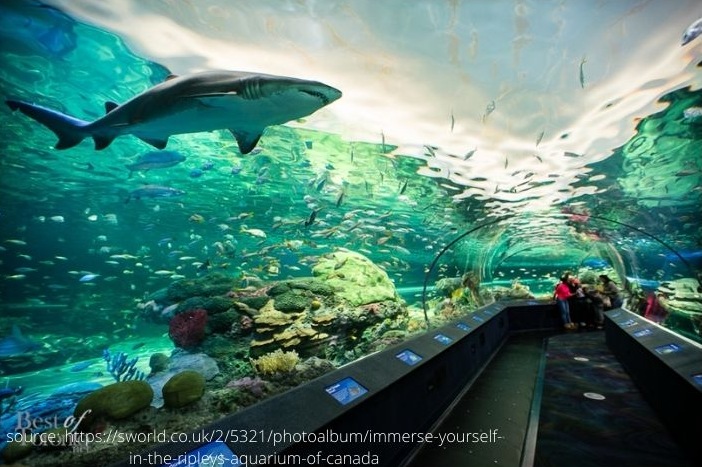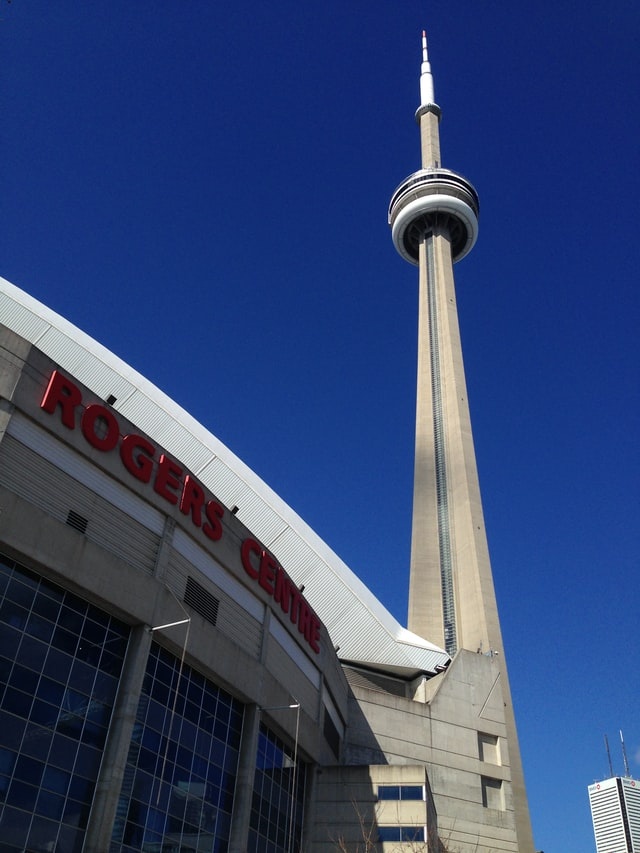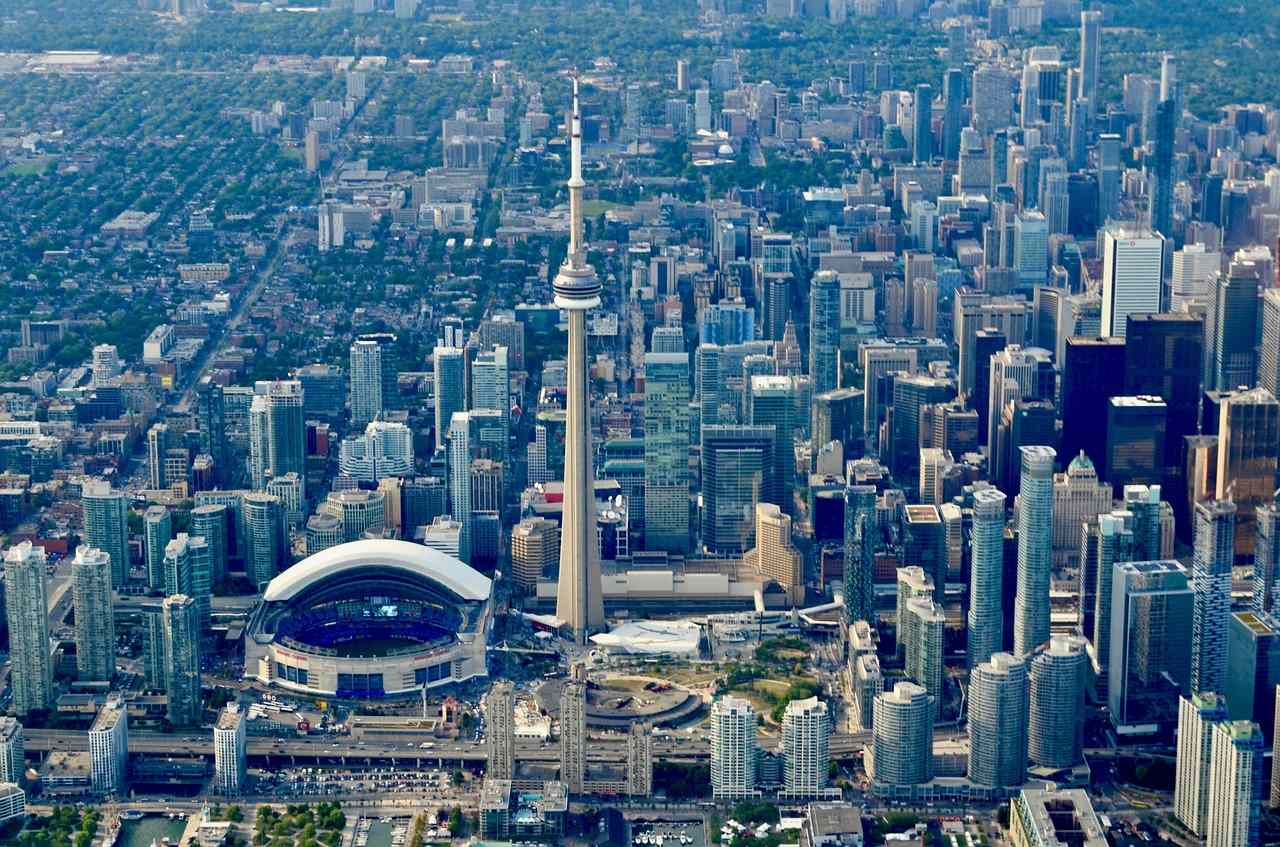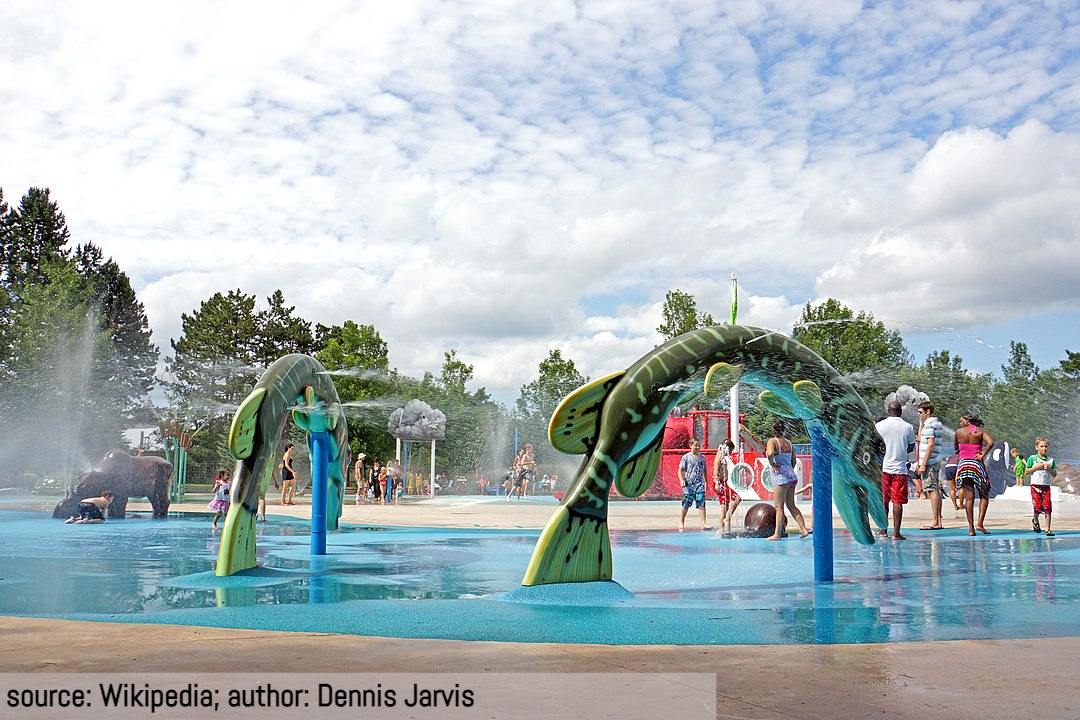The most important information about Toronto
- History of Toronto - A small group of Indigenous people moved to Toronto after the end of the Ice Age that was approximately 12,500 years ago. The urban community in this area dated to 1793 when British colonial officials founded the Town of York, and in 1834 it became the City of Toronto. The city increased in the second half of the 19th century because of the immigrants coming to Canada. Today it is the capital of the province of Ontario and the most populous city in Canada. It is also Canada’s financial and commercial centre.
- Geography and time zone - Toronto is located on the north-western shore of Ontario Lake. The Toronto Islands and Port Lands on the Ontario Lake are also a part of Toronto. The Toronto Islands were actually a peninsula, but a storm in 1858 severed their connection to the mainland. The city is mostly flat with gentle hills. There are rivers, like the Humber River in the west end, the Don River east of downtown, and the Rouge River at the city’s eastern limits. The Time zone in Toronto is Easter Standard Time zone, GMT -5.
- Climate - The climate of Toronto is a hot summer humid continental climate with warm, humid summers and cold winters. Winters are cold with frequent snow and temperatures usually below 0 °C. Summers have hot temperatures with daytime ones usually above 20 °C. Summer is also the wettest season.
- Demography - In 2017, Toronto had an estimate of 2.93 million inhabitants. Toronto has the second-highest percentage of constant foreign-born population among world cities, with no single nationality or culture dominating the immigrant population. The three most commonly reported ethnic origins overall are Chinese, English, and Canadian. The largest minority groups are South Asian, East Asian, and Black. The most common religion is Christianity, followed by Islam, Hinduism, Judaism, Buddhism, and Sikhism.
- Tradition and culture - What is Toronto unique for? - Toronto is unique for its towering buildings, bustling streets, and a famous waterfront skyline dominated by the CN Tower. It is also known for its ethnic and cultural diversity, as well as professional sports teams, and competitive universities. Toronto has ethnic neighborhoods like Chinatown, Corso Italia, Greektown, Kensington Market, Koreatown, Little India, Little Italy, Little Jamaica, Little Portugal, and Roncesvalles, which is a Polish community.
City Travel Tips for Toronto
- Official Language and other languages spoken - Official languages in the whole country are English and French. Other languages that are spoken in Toronto are Cantonese, Mandarin, Tagalog, Italian, Spanish, and others.
- Entering Toronto: Procedures and requirements - You don’t need anything when you’re entering Toronto, but you do need a valid passport and a visa, if necessary. You can check the entry requirements by country on the website of the Government of Canada.
- Money Tips - Currency - The currency that is used in all of Canada is the Canadian Dollar. Toronto is the most expensive city in Canada. You should budget your stay in the city and plan how you’ll spend the money. You can stay at more affordable places and use public transportation. Find local restaurants away from the tourist attractions and eat where the locals eat. Toronto also has free attractions that you can save your money on. You need around 1,100 euros for a 7-day trip to Toronto.
- The number for police, fire, or medical emergencies is 911.
- Country Dialing Code Prefix - The dialing code for Canada is +1.
- Google Maps - this app will help you find the perfect route for you and let you explore nearby places based on your location. It also allows you to download an offline map of any area, which can be very useful.
- Citymapper - an app that gives you the information about the public transportation in the city. It has offline maps, bike routes and real-time arrival of buses at stops.
- Airbnb - an accommodation booking app that allows you to find the perfect place to stay while you’re in Toronto. You can also find new places to explore that are close to your accommodation.
- Airline Limousine - a transport app that allows you to book a limo from and to Pearson Airport. It is wheelchair accessible, and it’s cheaper than Uber.
- Toronto Map and Walks - a tourist app that has self-guided tours that feature the landmarks and attractions you’ll want to see. There are also themed walking maps such as Cabbagetown Walk, Art Lover’s, Historical tours of Toronto, and more.
- Food Apps - You can track the best restaurants in Toronto with the Street Food Toronto app that also allows you to book them. Another good app for ordering food is Ritual app with which you can try dishes from the best local restaurants
When to visit Toronto?
How to get to Toronto?
- Plane - Toronto has one major international airport: Toronto Pearson International Airport. It is the largest and busiest airport in Canada. It is also a hub for Air Canada, Flair Airlines, OWG, Sunwing Airlines, Swoop, WestJet, and the cargo FedEx Express.
- Train - the main train station in Toronto is Union Station, and VIA Rail and AMTRAK bring visitors there.
- Bus - there is a bus terminal at the Union Station. It is the central intercity bus terminal. Some of the bus companies that run long distances are Coach Canada, TOK Coachlines and Greyhound Lines.
- Car - there are several highways that link surrounding cities to Toronto: Highways 2, 401, 407, and the Queen Elizabeth Way.
Activities for tourists in Toronto
- Niagara Falls Day Tour with Boat Cruise - If you’re in Toronto, you shouldn’t miss the opportunity to visit Niagara Falls. With this tour, you can get to the Falls from Toronto and see them up close on the Niagara City Cruise Voyage to the Falls and visit the historic town of Niagara-on-the-Lake. The price of this tour is 104.39 euros, and you can book it here.
- Hop-On Hop-Off Sightseeing Bus Ticket - this ticket allows you to see all the sights in Toronto at your own pace by an open-top double-decker bus. You also have an audio guide on the bus in Spanish, Chinese, English, French, German, Italian, Portuguese, and Russian. During the summer months, there is a complimentary cruise that allows you to see the sights from the harbor. There are 20 stops and a live guide. The price of the ticket is 42.52 euros, and you can book it here.
- Distillery District Historic Walking Tour - on this tour, you can walk through Distillery District with an expert guide. You will discover the incredible architecture in Victorian style and with cobblestone streets of this district and visit the former largest Distillery in the world. The price of this tour is 16.63 euros, and you can book it here.
- The Toronto Eaton Centre - a shopping mall in the heart of Toronto’s downtown. It has more than 230 stores, and it is one of the largest shopping malls in Canada. In this mall, you can shop in stores for different budgets and with other things, you can eat and admire a vast mobile of a flock of Canadian geese, Flight Stop, designed by artist Michael Snow.
- Bloor-Yorkville - a neighborhood in downtown that features Victorian architecture. It has dozens of restaurants, boutiques, and art galleries. It also has high-end shops like Prada and Gucci, beauty and wellness places, as well as museums and galleries.
- Chinatown - one of the largest Chinatown areas in North America. Here you can find exotic trinkets, jewelry, clothing, and household items. You can also eat at one of the numerous restaurants that serve authentic Chinese, Vietnamese and other Asian food.
- Beaches International Jazz Festival - this festival takes place over four weeks in summer in the heart of the lakeside neighborhood Beaches. It is a celebration of music that features a dynamic musical roster on multiple stages.
- Canadian National Exhibition - it takes place at the end of the summer. It has midway rides, live music, dog and pony shows, and outrageous foods, like rainbow grilled cheese, pickle pizza, and cotton candy taco. There is also The Gaming Garage, a special three-day event that introduces the latest in the world of gaming and gaming competition.
- Cavalcade of Lights - this event marks the beginning of the holiday season, with the illumination of Toronto’s official 18-meter Christmas tree, followed by performances by some of Canada’s top musical talents, a fireworks show, and a DJ skating party. It is happening at Nathan Phillips Square.
- Doors Open Toronto - during this event, architecturally, historically, culturally and socially significant buildings open their doors for the weekend for everyone for free. It is held on the last weekend of May.
- Honda Indy Toronto - a motorsports festival that takes place on the streets surrounding Exhibition Place near Lake Ontario in July. It features a variety of attractions, food trucks, interactive displays, and activities. It also supports local charities.
Tourist attractions in Toronto?
- CN Tower - a concrete communications and observation tower that has a revolving restaurant. It is 553.3 meters high and is located in the downtown core of Toronto. The building was completed in 1976, and in 1995 it was declared one of the modern Seven Wonders of the World by the American Society of Civil Engineers. The CN Tower is open daily from 10 am to 9 pm. There are three observation levels: LookOut, Glass Floor, and SkyPod. The 360 Restaurant is open from 11 am to 3 pm and from 4:30 pm to 10 pm. Timed General Admission is 28 euros and you can book it on the official website of CN Tower.
- Royal Ontario Museum - a museum of art, world culture and natural history that has a huge range of culture and nature exhibits. It is the largest museum in Canada and it is located north of Queen’s Park, in the University of Toronto district. It was established in 1912 and opened in 1914. The museum is open from Wednesday to Sunday from 10 am to 5:30 pm. There are different types of tickets: general admission, which is 16.15 euros for adults, general admission + Great Whales, and General Admission + Breaking the Frame. You can book your tickets on the museum’s website.
- Art Gallery of Ontario - an art museum that is located in the Grange Park neighborhood of downtown Toronto. It is the second-largest art museum in Toronto. Apart from exhibition spaces, the gallery has an artist-in-residence office and studio, dining facilities, event spaces, gift shop, library and archives, theatre and lecture hall, research center, and a workshop. It was established in 1900, and it was formally incorporated in 1903. The Gallery is open from Tuesday to Sunday from 10:30 am. On Tuesdays and Thursdays it closes at 5 pm, on Wednesday and Friday at 9 pm, and on Saturday and Sunday it’s open until 5:30 pm. The ticket price for adults is 18 euros, while for people under 25 it is free. You can book your tickets on the Art Gallery of Ontario website.
- Casa Loma - a Gothic Revival style mansion and garden in midtown Toronto that was constructed from 1911 to 1914, and is now a historic house museum and landmark. It has been a popular filming location for movies and television and a venue for wedding ceremonies. The museum is open daily from Monday to Sunday from 9:30 am to 5 pm. The ticket price for adults is 21 euros, and you can buy the tickets on Casa Loma website.
- Ripley’s Aquarium of Canada - a public aquarium that is located in downtown Toronto and has 5.7 million litres of marine and freshwater habitats from across the world. It holds more than 20,000 exotic sea and freshwater specimens from more than 450 species. The aquarium is open daily from 10 am to 8 pm. The ticket price for adults is 30 euros and you book yours on the aquarium’s website.
- Toronto Zoo - the largest zoo in Canada that is divided into seven zoogeographic regions: Indo-Malaya, Africa, Americas, Tundra Trek, Australasia, Eurasia, and the Canadian Domain. The zoo also has areas like the Kids Zoo, Waterside Theatre, and Splash Islands. It has over 5,000 animals representing over 500 species. The zoo is open daily from 9:30 am to 4:30 pm. The tickets for adults are 18 euros, and you can book them here.
- Toronto Islands - a chain of 15 small islands in Lake Ontario. The Toronto Island Park, the Billy Bishop Toronto City Airport, several private yacht clubs, a public marina, Centreville Amusement Park, a year-round residential neighborhood, and several public beaches are all located on the islands. They are the most significant urban car-free community in North America. The islands can be accessed by the ferry that goes from the terminal in downtown Toronto.
- High Park - a municipal park that is mixed recreational and natural. It has a sporting, cultural, and educational facilities and gardens, playgrounds, and a zoo. It is the second-largest municipal park in Toronto and it is located to the west of downtown Toronto.
- St. Lawrence Market - a major public market building that is located on the southwest corner of Front and Lower Jarvis Streets. It was opened in 1902 and restored during the 1970s. The South Market is open from Tuesday to Friday from 9 am to 5 pm, and on Saturday from 5 am to 4 pm. The Saturday Farmers Market is open from 5 am to 3 pm.
- Canada’s Wonderland - a 134-hectare theme park in Vaughan. It was opened in 1981 and it was the first central theme park in Canada, and it’s still the largest one in Canada. This amusement park has rides like Antique Carrousel, Backlot Stunt Coaster, and Beagle Brigade Airfield, as well as water slides like Barracuda Blaster, Black Hole, and Lakeside Lagoon Slides. The park is open seasonally. You can check the opening hours for specific days and buy tickets on Wonderland's website.
Accommodation in Toronto
- Hotels - Toronto has many hotels that are mostly located in the downtown core. If you’re looking for a hotel that is a bit cheaper, you should consider places outside of the heart of downtown Toronto. Some of the famous hotels in Toronto and the more pricey ones are Chelsea Hotel Toronto, The Fairmont Royal York Hotel, and DoubleTree by Hilton Toronto Downtown. The cheaper hotels are the Rex Hotel Jazz & Blues Bar, Super 8 by Wyndham Downtown Toronto, and the Alexandra Hotel.
- Rooms and Apartments - Apartments can be suitable if you’re traveling with your family or friends. There are also aparthotels, the regulated accommodations that are suite-style rentals, usually with a kitchen. They also have hotel-like services and amenities like a reception, gym, sauna/pool, onsite restaurant, etc. Some of the aparthotels are Canada Suites on Bay, One King West Hotel and Residence, and Yonge Suites Furnished Apartments.
- Hostels and budget accommodation - Toronto doesn’t have a lot of hostels, but some of them that have a great location, amenities, and staff are HI Toronto Hostel, Planet Traveler Hostel, and The Only Backpacker’s Inn.
Best restaurants in Toronto
- Goodfellas Wood Oven Pizza - a restaurant that offers Italian food and traditional Pizza, as well as wine.
- New Orleans Seafood & Steakhouse - a steakhouse that also offers seafood, and cajun & creole.
- Moxie’s Grill & Bar - a place that offers grill and bar food, such as steaks, burgers, pastas and seafood.
- Best areas in Toronto for a night out are King West, that has bars and clubs, Queen West, with Wueen Street Warehouse, Bovine Sex Club, Rush Lane Co., and more,
- Parkdale, with Shameful Tiki Room, Miss Things, and Grand Electric, and Ossington Avenue, with Man of Kent, Bellwood’s Brewery, Painted Lady, and Hawker Bar - are also the best places for having a good night time.
Public transport in Toronto
- Buses and Streetcars - Buses and streetcars go everywhere that the Metro doesn’t. Streetcars are a type of trams, and they run 24 hours a day. You can find the routes and schedules of the streetcars here. Buses run from 6 am, or 8 am on Sundays, until 1 am everyday. You can find the ways and plans for the buses here.
- Metro - There are four subway lines: Line 1 that goes from Yonge to University, Line 2 that runs from Bloor to Danforth, Line 3 Scarborough, and Line 4 Sheppard. The subway runs from 6 am, or 8 am on Sundays until 1:30 am. You can find their routes and schedules, as well as different maps for the whole network, on the official website of the TTC.
- Ferry - Ferry is the only way you can get to and from the Toronto Islands. They depart from the Jack Layton Ferry Terminal in downtown Toronto. You can find the schedule for the ferry here.
- Cycling - The city of Toronto offers a bike-share program called Bike Share Toronto. It has nearly 3,000 bikes and almost 300 stations. You can get a day pass for $7.
- Taxi - Taxis in Toronto are reasonably expensive. There are also ride-hailing apps, such as Uber and Lyft, if you choose that form of transportation.
















